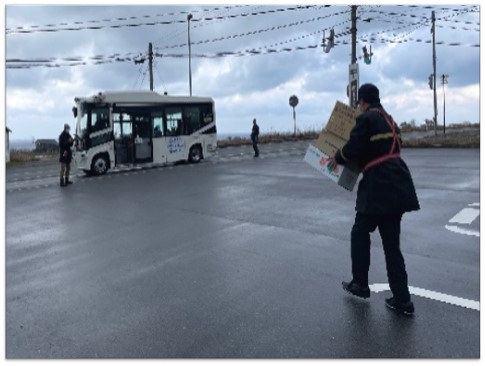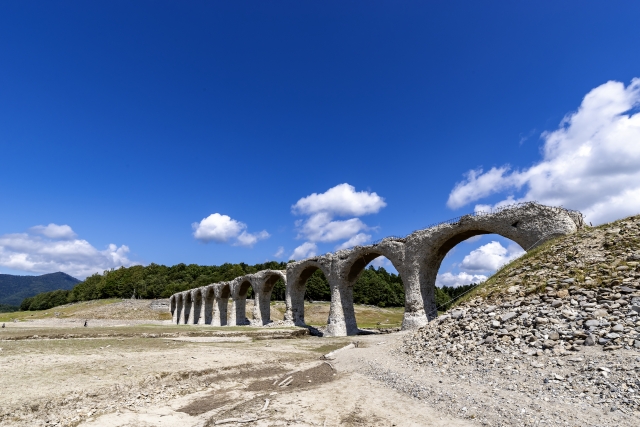- Autonomous driving is a system that is responsible for all driving activities including perception, judgment and operation with no human input, allowing the vehicle to drive automatically. Specialized devices such as sensors and cameras are installed to support the autonomous driving system.
- There are 5 levels of autonomous driving (from 0 to 5) and Level 4 has already been implemented in society within Japan. The Oirase demonstration will operate at Level 2 with the driver manually intervening as necessary.


- In Aomori Prefecture, a shortage of drivers is also predicted in the future. If autonomous driving becomes widespread, it is expected to be one solution for ensuring and maintaining local public transportation.
- Therefore, the government aims to implement autonomous driving services at around 50 locations by 2025 and in over 100 locations by 2027.

Various regions and companies are pursuing Level 4 autonomous driving to enable unmanned mobile services.

Sado city, Niigata Prefecture
Snow accumulation demonstration, collaboration with other industries

Rinkai Fukuto, Tokyo
Pedestrian pathways, creating a lively atmosphere

Aichi Prefecture
Main roads, robot taxis

Eiheiji Town, Fukui Prefecture

HANEDA INNOVATION CITY®

Kaminokawa Town, Hokkaido

GLP ALFALINK Sagamihara
The realization of autonomous driving requires support from road infrastructure and cooperation from the public.
- Autonomous Vehicles are not good at "Fexible" movements such as avoiding parked vehicles on the road. In addition to improvements in autonomous driving technology, the realization of autonomous driving will be accelerated if those around us who are not driving autonomous vehicles by "Going easy on"
- Let's think together about what kind of autonomous driving could take in the transportation that will be introduced to Oirase Gorge after opening the by pass.
- Street parking
- Bicycles or pedestrians suddenly rush out
- Detect branches, leaves, trees, etc. as obstacles
*In the case of the Autonomous vehicle operating at Towada Lake this time
How's about The Future of Oirase Gorge?

- After the Oirase Gorge (Aobunayama) Bypass is completed, traffic will be restricted year-round on National Route 102 (Oirase Gorge Section), which will become a People-centered space rather than cars, with the aim of opening the Oirase Field Museum, where visitors can learn about nature along the roadside from the road.
- Because the traffic-restricted section is long, at approximately 10 km, we aim to create new value by introducing new forms of transportation that complement walking, as well as utilizing green slow mobility Autonomous vehicles accompanied by eco-tour guides, in order to make Oirase a sustainable experience that anyone can enjoy.


Implementation of construction to promote separation of pedestrians and vehicles
By installing roadside signs and roadside stickers along autonomous driving routes and making them widely available, we will prevent pedestrians and cyclists from suddenly rushing out and parking on the road.

To disseminate information about autonomous vehicle efforts
Booths and signs will be set up inside Oirase Stream to communicate the efforts. We hope to educate visitors about safety by informing them in advance that autonomous vehicles will be operating

Survey of traffic regulations and various effort
We will conduct surveys on traffic volume and other measures, as well as questionnaire surveys on each measure. We will investigate the effectiveness of the measures and identify issues, including safety to verify them.






